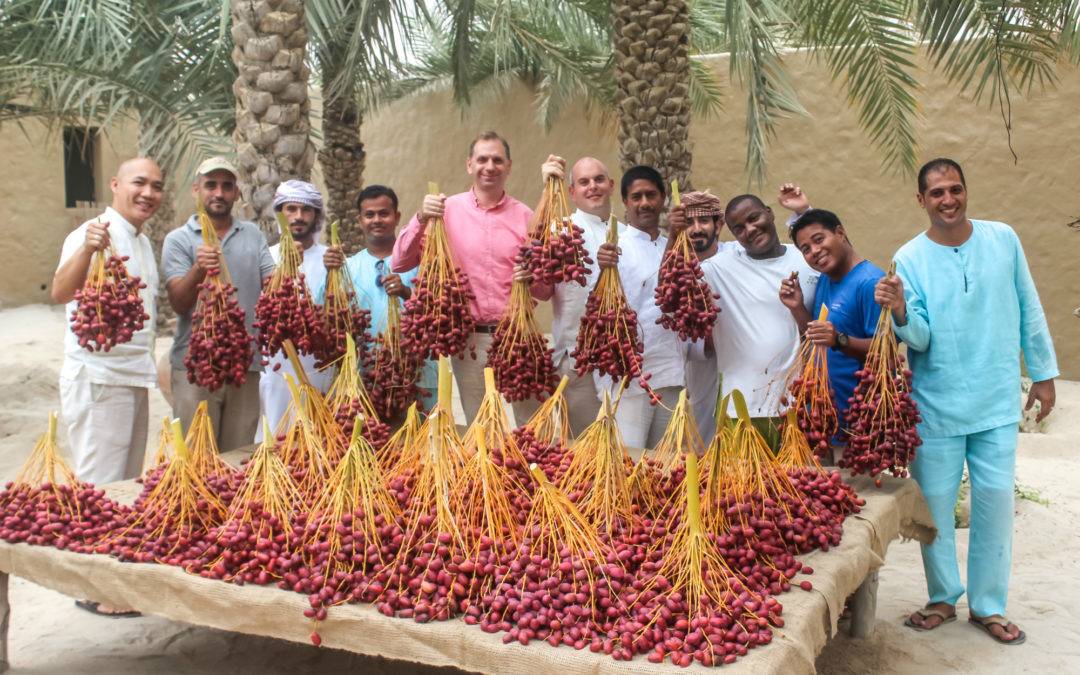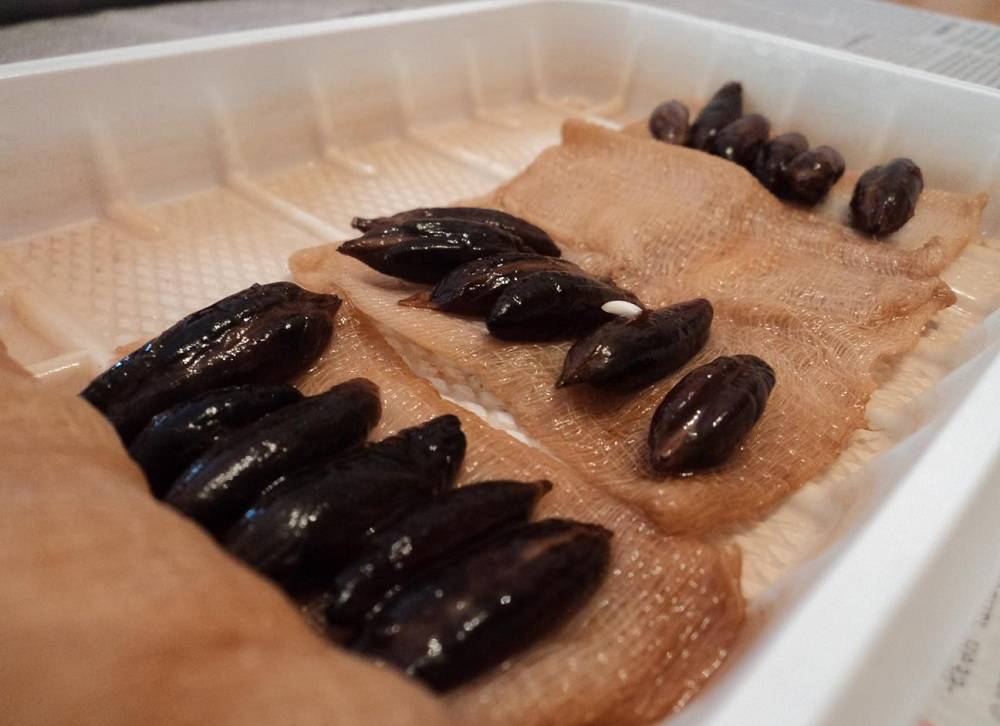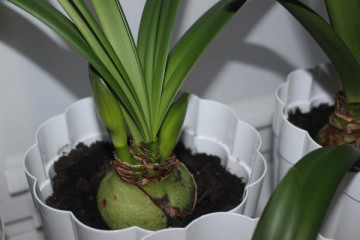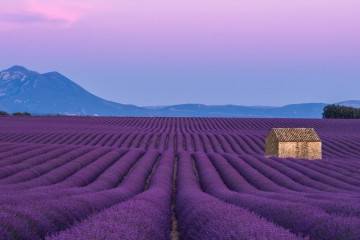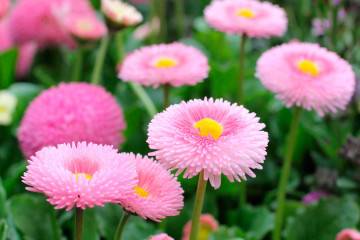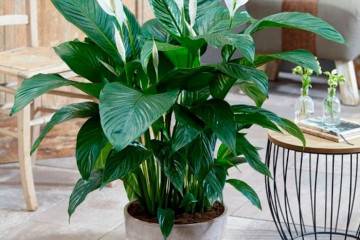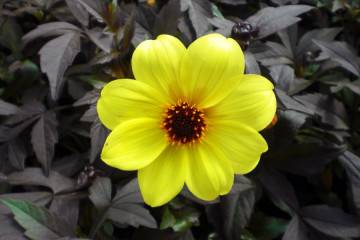How dates grow, what date palms look like
Content:
Parched deserts are not very welcoming and suitable for survival. Little can be grown for food. Therefore, dates are almost the main source of nutrition. This bread feeds the inhabitants of deserts, semi-deserts, tropics of North Africa and Western Asia.
Where dates are grown, healthy fruits are eaten fresh, dried. By the way, the latter are widespread in the markets of the whole planet and enjoy success. But in most of the world, the palm is grown exclusively as a home flower.
How dates grow
A real date is completely indifferent to the composition of the soil, irrigation regime. In its natural environment, it grows on bare sands, dense clay, stones. Even saline soils are not an obstacle for him. Where a culture gets its water from can be understood by its deep-rooted taproots. She is not afraid of strong winds, drying up the heat.
Where dates grow in nature: in which countries
Where dates grow in their natural environment, which countries are the main producers and suppliers of fruits, depends on climatic conditions. There are many countries that grow dates. It:
- Iraq;
- Bahrain;
- Algeria;
- Iran;
- United Arab Emirates;
- Tunisia;
- Syria;
- USA;
- Egypt;
- Mexico;
- Australia;
- Saudi Arabia.
Where do dates grow in Russia?
Russia does little to meet the conditions for the successful fruiting of a real date. Meanwhile, it can be found on the territory of Russia. These are the southern slopes of the Caucasus Mountains. Tourists can observe flowering, fruiting. But the fruits of Russian date palms are very far from ideal.
Outdoor cultivation of date palms in the countries of the former USSR
The achievements of the USSR in agriculture also touched the finger dates. Breeders have achieved tangible success in their cultivation in the south of Turkmenistan. The so-called Uzbek (Tajik, Kazakh) dates are nothing more than a myth. This is an import. More or less acclimatized in the southern republics of the Canary date, but rather for beauty.
What dates look like: a description of the fruits of the date palm
The date fruit looks like a long cylinder. Fresh, it reaches 6-8 cm in length, about 4.5 cm in diameter.
The berry can be orange, yellow, reddish, brown. How dates look on a tree depends on the variety. Also, belonging to one or another variety determines the juiciness of the dried fruit.
Inside the date there is a rather large stone with a horizontal groove.
How dates are harvested
The dates on the tree are collected exclusively by hand. This is very hard work. How dates grow and how they are harvested can only be told by the workers of the palm plantations themselves.Considering that from 3 to 18 brushes weighing up to 18-20 kg each ripen on an adult palm, harvesting is available only to men.
Depending on the territorial location, the crop is harvested from May to the end of December.
Types and varieties of date palms
All varieties and varieties of edible dates are descended from the common (finger) date. Usually this tree is about 15 m high. It is light-loving, frost-hardy, drought tolerant. What dates look like, in terms of fruit, depends on the variety.
The most widespread are groups that combine varieties (in addition to the finger itself):
- Mazfati. The group unites more than 20 varieties. Grows in Iran. Fruits are dark medium-sized (up to 5 cm) with a high sugar content;
- Kabkab. A very sweet date. It is also grown in Iran. The bright yellow fruit tastes like honey. The fruits are large (up to 15 cm in length), the stone is small. The fruit is fast. In room conditions, it can be stored for up to 6 months, in the cold for about two years;
- Hasui. Also very sweet, but medium-sized berries. They can have skin tones ranging from yellow to brown;
- Barhi. Grown in Saudi Arabia and Israel. The fruits are large, round. The taste is honey, the skin is bright yellow. They are used mainly fresh;
- Anbar. Also a native of Saudi Arabia. Small burgundy fruits are prized for their high protein content.
The following varieties are also popular:
- Khadravi;
- Majul;
- Hiyani;
- Sayer;
- Rabi;
- Dekel Nur;
- Khudri;
- Safavi;
- Sukkari;
- Halawi;
- Ajva;
- Sagai.
Date palm at home: how to care and replant
How dates grow can be observed by planting a plant at home. The house palm is a rather unpretentious plant. True, it grows to an impressive size.
Is it possible to grow from a seed at home
You can grow a palm tree from seed without any problems. Green shoots will appear in 5-6 months. You need to understand that the palm tree will have a purely decorative role. She will not bear fruit.
A new plant can be obtained from seeds of both fresh and dried fruit. It is recommended to soften the bone before planting. Step by step, this process looks like this:
- The bone is well washed.
- Wraps up in a damp cloth.
- Placed in heat (heating battery, for example).
- The moisture level is monitored.
After a couple of days, the swollen bone can be stuck into the ground.
Hard bones can also be boiled (boiled in water) before planting.
Growing date palms at home
On the territory of Russia, the date palm is grown at home. She plays a purely decorative role. But for good growth, culture should create conditions close to natural.
Date palm transplant rules
In the case of a house palm, even the shape of the pot matters. It should be deep and narrow. It is better to buy ready-made soil. If you wish, you can prepare the soil yourself. It will be required in equal proportions:
- peat;
- humus;
- coarse sand.
The bottom of the container should be laid out with drainage material (expanded clay, pebbles).
Transplants are carried out once every five years.
How to care for a palm tree at home
When growing a palm tree, experts recommend adhering to certain rules. The following points are important:
- lack of drafts;
- watering with soft, settled water;
- wiping the leaves with a damp cloth;
- weekly warm shower;
- feeding with minerals and organic fertilizers every two weeks during the growing season and monthly in winter.
Watering mode
Watering the date tree is carried out on the verge of drying out, that is, when the top layer of the soil dries up 2-3 cm deep. Watering should be abundant, and the remaining moisture from the pallet should be drained. In summer, this is on average 2-3 times a week. In winter, watering almost stops, but the earthen lump should not completely dry out.
Illumination requirements
Palm is a southern culture. The duration of daylight hours she needs at least 10 hours. South, south-east, south-west windows are suitable. Very young plants should be shaded from direct midday sunlight.
Why do the leaves of the date palm darken
The culture is very attractive to insects such as:
- mealybug;
- spider mite;
- scabbards.
The defeat of these pests leads to darkening and drying of the leaves. You can get rid of the misfortune with a solution of laundry soap or diluted garlic juice. An insecticide such as actellic can be used.
A healthy plant serves as a decoration for living quarters, resting places in institutions. This is where the benefits of a palm tree end. You can't wait for flowering and fruiting from them. Nevertheless, the decorativeness of the exotic completely compensates for this disadvantage.

